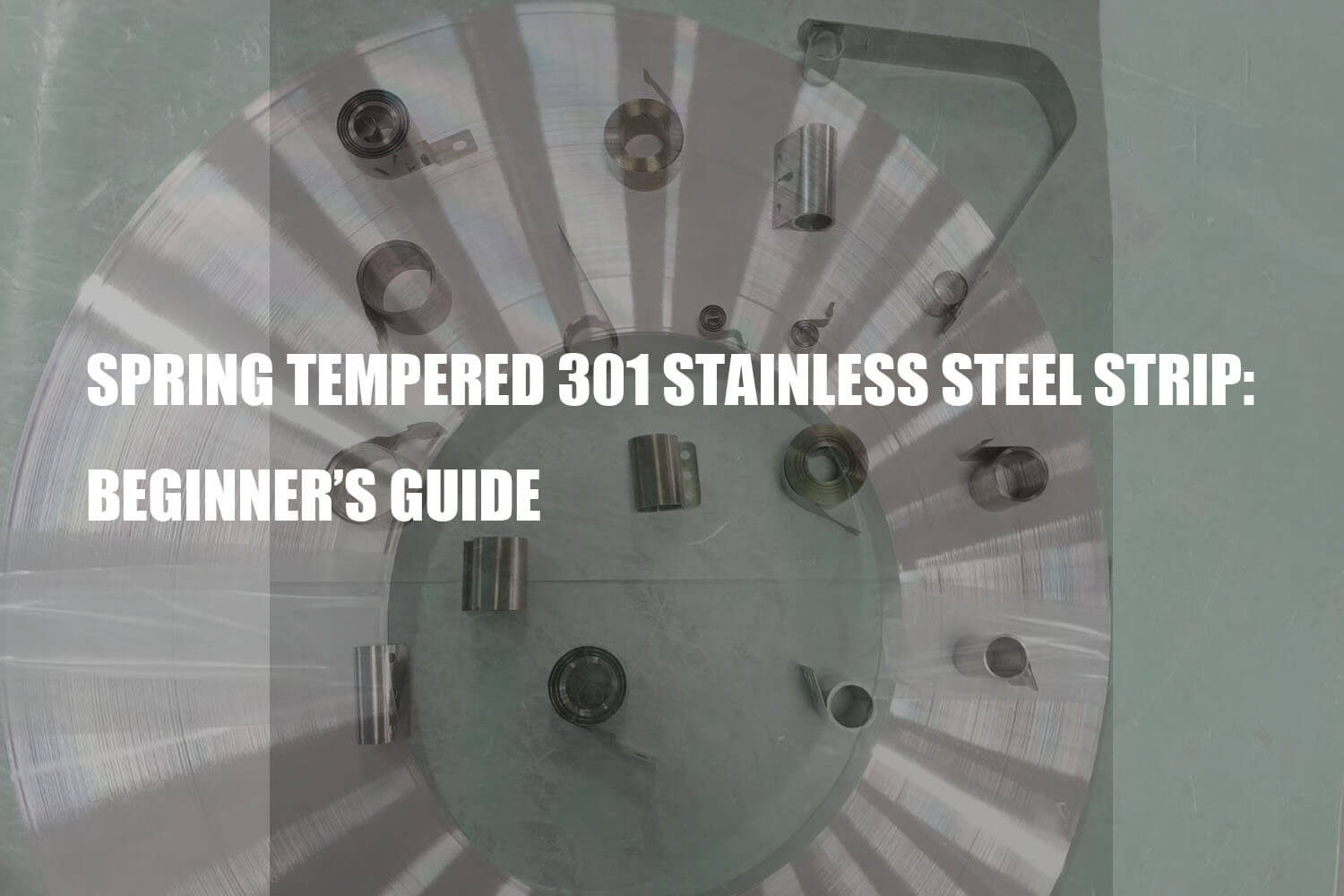Spring tempered 301 stainless steel strip is a high tensile grade of steel that maintains its strength and corrosion resistance even when subjected to the harshest conditions.
It is also known for its ability to retain its shape memory properties after being exposed to high temperatures.
The combination of these qualities makes stainless steel 301 spring tempered ideal for applications that require frequent or repeated exposure to extreme temperatures, as well as those which require an unusually high degree of precision.
This can heavily contribute towards the results that you will be able to get at the end of the day.
If you are the beginner in this field, why not keep reading.
What is Spring Tempered 301 Stainless Steel Strip?
Spring tempered 301 stainless steel strip is commonly used for springs manufacturing.
To make tempered stainless steel spring 301 strip, the cold rolled stainless steel is heated to a point just below its upper critical temperature, between 1700° F and 1850° F.
Then the material is rapidly quenched by immersion into liquid salt. The purpose of this rapid quenching is to trap carbon in solution, which causes the material to become austenitic.
After quenching, the material is then subjected to a second tempering treatment, where it is heated again to a temperature of about 1200° F. This second tempering relieves stresses developed during quenching, and also reduces the hardness of the material and makes it less brittle.
Spring tempered 301 stainless steel strip is made from grade 301 (S30100) stainless steel coil, which has a minimum of 16% chromium and 6% nickel.
It has been modified to increase both its strength and ductility. Other characteristics of this stainless steel grade are high strength, excellent corrosion resistance and the retention of a larger fraction of room temperature tensile strength than the common austenitic alloys like garde 304 stainless steel strip.
Spring tempered stainless steel strip is known for its ability to withstand high tensile stress and in turn helps minimize any permanent deformation.
1.Spring Tempered 301 Stainless Steel Strip Chemical Composition
The chemical components of spring tempered 301 stainless steel strip is summarized in the following table:
| Grade | C | Si | Mn | P | S | Cr | Ni | Mo |
| 301 | ≤0.15 | ≤1.00 | ≤2.00 | ≤0.045 | ≤0.030 | 16.00-18.00 | 6.00-8.00 | – |
2.Mechanical Properties of 301 Stainless Steel Strip For Spring
“H” is the Japanese JIS G4313 cold-rolled stainless steel strip standard for springs production.
The H and mechanical properties detailed information of grade 301 stainless steel strip is summarized in the following table:
| Grade | Status | Hardness | Yield Strength | Tensile Strength | Elogation |
| HV | Mpa | Mpa | % | ||
SUS301 | ANN | ≤218 | ≥205 | ≥520 | ≥40 |
| 1/4H | 250-310 | ≥470 | ≥780 | ≥25 | |
| 1/2H | 310-370 | ≥510 | ≥930 | ≥18 | |
| 3/4H | 370-430 | ≥745 | ≥1130 | ≥5 | |
| FH | 430-490 | ≥1030 | ≥1320 | ≥4 | |
| EH | 490-550 | ≥1275 | ≥1570 | ≥3 | |
| SH | ≥550 | ≥1550 | ≥1750 | ≥1 |
3.Characteristics of Spring Tempered 301 Stainless Steel Strip
The characteristics of spring tempered 301 stainless steel strip are:
- Spring tempering method;
- Stainless steel quality and standard;
- Excellent surface performance and corrosion resistance;
- Good toughness, wear resistance and toughness;
- Good formability;
- Good machinability and welding ability.
Why are We Using 301 Stainless Steel in Springs?
Stainless steel springs are used in a variety of applications that require exposure to the elements and corrosive materials. Stainless steel springs are used for shock loads and high stresses associated with extreme temperatures, high pressures and corrosive environments.
Stainless steel is a great material for springs because it has high tensile strength, which means it can hold up to a lot of pressure without breaking. Another property that makes stainless steel ideal for springs is its corrosion resistance. This means that the spring can resist damage from moisture and harsh environments.
The best stainless steel for springs is alloy 301. This stainless steels are generally considered non-magnetic which makes them ideal for applications where rust, corrosion, and durability are important.
People use 301 stainless steel strip in our springs manufacturing because it is the most economical material that offers good corrosion resistance while maintaining the strength needed to withstand high temperatures, pressures and loads.
Read More 301 Stainless Steel Strip Applications Guide.
What Are The Advantages Of Spring Tempered 301 Stainless Steel Strip?
The spring tempered 301 stainless steel strip offers certain benefits over other materials. The strips are available in various sizes, thickness and tempers.
They have a wide array of uses in different industries. The strips have several advantages over other materials. Some of them are as follows:
- The spring tempered 301 stainless steel strip is well suited for applications that need very high tensile strength and good wear resistance. This makes it ideal for applications like springs and fasteners where the load is considerable.
- The spring tempered 301 stainless steel strip has a certain degree of toughness even at sub-zero temperatures. This makes it suitable for applications that need to operate in extreme conditions.
- The spring tempered 301 stainless steel strip has excellent corrosion resistance properties. It can withstand corrosion from most chemicals, acids, alkalis and corrosion from atmospheric conditions.
- The spring tempered 301 stainless steel strip is relatively easy to work with during fabrication as compared to many other metals. It can be fabricated using common tools and equipment.
- The spring tempered 301 stainless steel strip is a versatile metal that can be used in many applications where other metals are not suitable due to some limitation.
Conclusion
Choosing right material of spring tempered 301 stainless steel strip will bring you good benefits and advantages for your springs projects.
We hope you got what you were looking for stainless steel 301 spring strips materials from China.
In case if you have any questions, feel free to contact HZW team.
HZW will help you in all your spring tempered 301 stainless steel strip needs.












